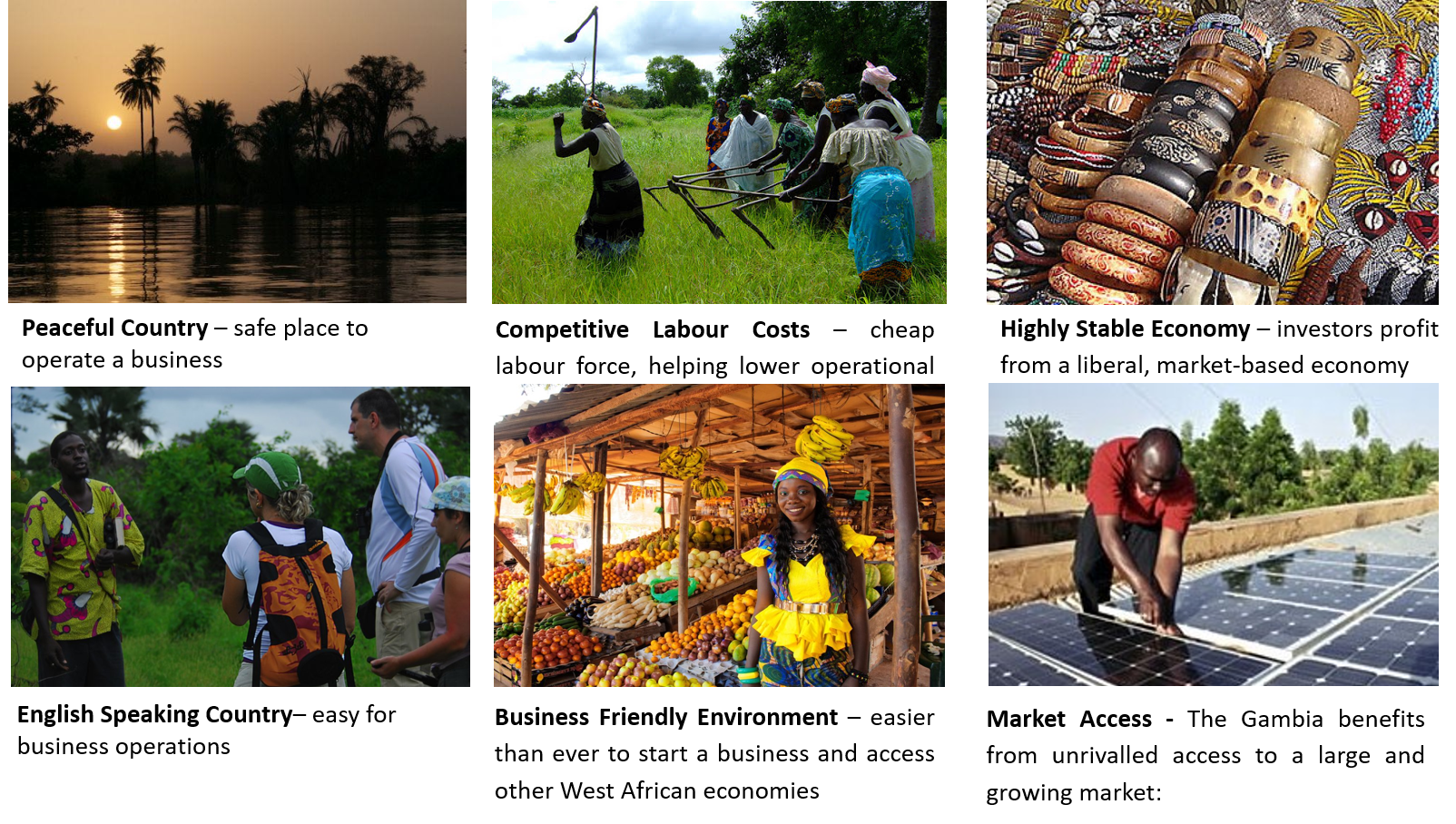
The Gambia has a small economy that relies primarily on agriculture, tourism, and remittances for support. Gradual reforms in fiscal policies have helped to improve stability and growth in the economy. However, despite the global economic challenges, The Gambia Government remains cautiously optimistic that growth will be maintained and the current macroeconomic stability will be sustained in the medium to long term.
Growth was robust at 6% in 2019, supported by improving confidence and record tourist arrivals, with sound macroeconomic management helping to reduce the fiscal deficit, exit from debt distress, and increase international reserves closer to prudential levels.
The COVID-19 crisis has, however, resulted in a sharp economic downturn in 2020, with a reduction in tourists and trade disruptions leading to a 0% growth and a contraction in real GDP per capita by 2.9%, partially reversing gains in poverty reduction. However, continued sound macroeconomic management and donor grant inflows have helped further reduce the fiscal deficit and public debt, and record high official remittances bolstered international reserves.
COVID-19 Response
The government has taken steps to protect lives and livelihoods during the relief period with support from development partners. The World Bank is providing support through its $10 million COVID-19 Emergency Response Project and 3.46 million Global Partnership for Education funded Emergency Education COVID-19 Response Project, while $10 million out of the $30-million Social Safety Net Project was repurposed. The IMF has provided support through its $21.2 million Rapid Credit Facility and$28.6 million Augmentation of Access under the Extended Credit Facility arrangement. Moreover, the IMF has approved the Catastrophe Containment and Relief Trust debt relief till April 2021 ($5.9 million). The European Union and African Development Bank have disbursed an additional $19.4 million and $7 million respectively as budget support grants in 2020.
The Gambia is also participating in the G20 Debt Service Suspension Initiative (DSSI) and has received debt service deferral confirmation from most of the creditors endorsing the initiative. The fiscal space created by the DSSI is about $4.15 million in 2020 (0.22%of GDP) and $3 million in 2021 (0.15% of GDP).
| Currency | Dalasi (GMD, D) |
|---|---|
| 1 July – 30 June | |
Trade organisations | AU, AfCFTA, CEN-SAD, ECOWAS, WTO |
Country group |
Statistics | |
Population | · |
· | |
GDP rank | |
GDP growth | · 4.8% (2017) 6.6% (2018) · 6.0% (2019e) 6.3% (2020f)[5] |
GDP per capita | · · |
GDP per capita rank | |
GDP by sector | · agriculture: 33% · industry: 8.7% · services: 58.3% (2008 est.) |
· 6.5% (2020 est.)[4] | |
Population below poverty line | · 48.6% (2015)[6] 9.7% on less than $1.90/day (2020)[7] |
· 35.9 medium (2015)[8] | |
Labour force | · 53.4% employment rate (2012)[12] |
Labour force by occupation | · agriculture 75% · industry, commerce, and services 19% · government 6% |
Unemployment | 8.6% |
Average gross salary | $0.65 per man-hour (2015)[citation needed] |
Main industries | processing peanuts, fish, and hides; tourism; beverages; agricultural machinery assembly, woodworking, metalworking; clothing |
External | |
Exports | $182 million (f.o.b., 2010) |
Export goods | peanuts and peanut products, fish, cotton lint, palm kernels |
Main export partners | · · · · (2013 est.)[14] |
Imports | $251 million (f.o.b., 2010) |
Import goods | foodstuffs, manufactures, fuel, machinery and transport equipment |
Main import partners | · · · · · · (2013 est.)[15] |
FDI stock | N/A (2011) |
Gross external debt Industries: processing peanuts, fish, and hides; tourism; beverages; agricultural machinery assembly, woodworking, metalworking; clothing Electricity
Agriculture - products: peanuts, pearl millet, sorghum, rice, maize, cassava (tapioca), palm kernels; cattle, sheep, goats; forest and fishery resources not fully exploited. Exports: $132 million (f.o.b., 1998)
Imports: $201 million (f.o.b., 1998)
| $1 Billion (2005 est.) |
| Public finances | |
|---|---|
| 150% of GDP (2020) | |
| Revenues | D4.5 billion (2015) |
| Expenses | $D963.6 million (2015) |
| Economic aid | $45.4 million (1995) |
Main data source: CIA World Fact Book | |




 2,320,032 (2020)
2,320,032 (2020)





